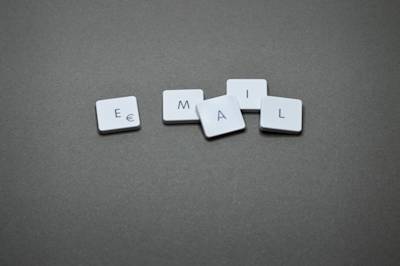
You Have a Blog to Grow Your Real Estate Business—Now What?
How to Optimize Your Real Estate Blog to Grow Your Business

How to Optimize Your Real Estate Blog to Grow Your Business

Jacqueline Kyo Thomas
In our previous post, we discussed the benefits of blogging for your real estate business. If you read that post, you know the bottom line: Blogging helps you reach your target clientele, whether you're aiming for buyers, sellers, or both. With your blog, you can answer the pressing real estate questions that your prospective clients are looking up on Google or other search engines. Your blog will not only answer questions but also help you build both an email list and an ongoing relationship with your prospective clients.
For a beginner's guide to understanding blogging and search engine optimization (SEO), check out this post: Real Estate Agents, Here's Why You Need a Blog.
Now, let's discuss what to do after you've set up a domain name, secured hosting, and chosen a design for your blog.

The very first thing you should do with your blog is to build an email list. An email list is a group of people who have signed up to receive your promotional emails. Building an email list is an easy way to stay in touch with your audience, whether that’s past clients, prospective clients, referral sources, and professional contacts.
To build an email list, you need to sign up for a email marketing service. If you attempt to send promotional emails to your email contacts from your private inbox, it can get really messy really quickly, and you may face legal issues, too.
Fortunately, there are many easy-to-use email marketing services available, such as MailChimp. MailChimp enables you to send marketing emails to your list even if you’re a complete beginner. Plus, you can start using MailChimp for free (forever) up to 2,000 subscribers and 12,000 monthly emails.
Don’t wait until later (when you start getting a good amount of traffic) to sign up for your email list. It’s best to have an email list in place from the start. This allows you to convert your first blog visitors into email list subscribers.

Once you’ve signed up for your email marketing service, it’s time to insert an opt-in form on your blog to capture your visitors’ email address.
The email marketing service you choose will provide you with a line of code that you’ll copy and paste into your blog’s source code. Your email marketing service should provide you with clear instructions on how to insert that code into your blog, but rest assured that it’s pretty simple to do.
The hardest part of creating opt-ins for your blog is deciding where they should go. You have options.
Header - The area of your blog above the title and menu navigation Sidebar - This popular choice is either to the right (most common) or the left side of the main text Footer - The area at the bottom of your website Within the Blog Post Itself - You can nestle your email opt-in form within blog posts Pop-Ups - Instead of a stationary opt-in form, you can have an invitation pop-up on the visitor’s screen Scroll-Activated - An opt-in form can pop-up when your visitor begins to scroll down the blog post or page Exit-Intent - An opt-in form shows when the visitor’s mouse moves towards the back button
Those are just a few of the many pop-up options available. While MailChimp offers basic opt-ins, you may wish to “upgrade” your lead generation efforts and try a service like OptinMonster. Create a lead capture form with OptinMonster and then connect it with MailChimp for maximum lead conversion.
If you want people to contact you, you must include a Contact page on your blog. But don’t just slap a contact form on your Contact page and think you’re done. If someone has made it to your Contact page, they’re motivated to reach out to you. Make it easy for them by incorporating the following best practices:
People want to get a sense of who you are before they meet you in person. This is the purpose of your About page. Introduce yourself and share why you’re the right expert for their real estate needs. Perhaps you’re a neighborhood authority or you’re a ninja negotiator. Take this opportunity to impress your visitors and convert them into prospective clients.
On your About page, do the following:
You need to come up with an editorial calendar for your blog. An editorial calendar is just fancy talk for a list of blog posts that you plan to write.
There are a lot of benefits to creating an editorial calendar, but for the busy real estate agent, here are the two most important:
Consider creating an editorial calendar for the next three to six months. I know what you’re thinking: That’s too much!
It may seem overwhelming at first, but let’s do the math. Let’s say you plan to write two posts a month. If you create an editorial calendar for the next six months, you’re only brainstorming for 12 post ideas at a time. That’s doable.
By the way, an editorial calendar doesn’t dictate when you write, only what and when you publish. If you write better in batches, you may be able to churn out four blog posts in one sitting. For a bi-weekly blogging schedule, that’s two months’ worth of blog posts composed in one day. Find the writing schedule that works best for you.
In addition to the posts that you plan to write in the next six months, you need to write a series of posts for your blog right away. Aim for 10 posts.
Why?
When you publish 10 posts to your blog right away, you lay a solid foundation. When visitors arrive on your blog, it won’t feel “new” or “deserted.” Plus, you’ll be able to attract more search engine traffic because you’ll have more content on your blog.
After you’ve added content to your blog, consider creating a lead magnet.
A lead magnet is usually a downloadable resource, such as an eBook, report, or checklist, that you offer for free in exchange for the visitor’s email address.
A lead magnet is more effective at building an email list than simply inviting people to sign up. Your offer gives them a valid reason to share their email address with you— they’re getting something of value right away.
You can create all sorts of lead magnets, including a checklist for sellers, a list of the best restaurants in the area, or tips for getting a home loan. What type of content appeals most to your target audience? That’s what you should package up and offer in exchange for an email list signup.
Before you go, check out these related posts:
Creating a Real Estate Marketing Plan for 2019 How to Become a More Productive Real Estate Agent How to Use Landing Pages to Sell More Houses